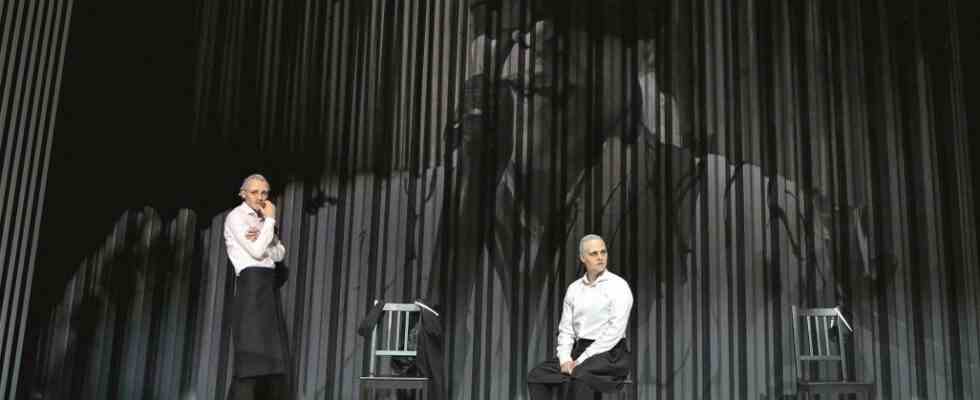Büchner’s Danton is equally a nihilist, who sees “worm food” in people, as a gifted rhetorician and great hedonist. It therefore makes perfect sense that Philipp Arnold had him embodied by three actors. But that’s not all: Stefan Herrmann, Leon Tölle and Barbara Wurster are also Robespierre, Camille Desmoulins, Julie and St. Just in the production of “Dantons Tod” at the ETA Hoffmann Theater.
The in-house director of the Munich Volkstheater didn’t leave much more of Büchner’s exuberant staff. And this gave the powerfully eloquent drama that the radical democrat wrote from his soul in just a few weeks before he fled to Strasbourg in the spring of 1835, even more power. Arnold’s condensed version begins and ends as a wacky puppet show with Danton’s head rolling. In between, Danton, tired of the revolution, has to live through the last days of his life over and over again.
And every day the lack of drive greets: passages that have long since become a dictum such as “What is it that lies, steals and kills in us?” are presented to the viewer by the trio in a repeat loop. Stefan Herrmann, Leon Tölle and Barbara Wurster are often Danton at the same time, who, unlike Robespierre, neither wants nor can continue to murder. In the chorus they speak the great monologues head-on into the audience, very accurately, powerfully and icily. Only the gestures differ. Here the hand is stretched to the sky, there the index finger is waved aggressively, someone is touching his heart.
Philipp Arnold’s staging is all of a piece. The foreign texts that he has inserted – Büchner’s “Letter on Fatalism”, Hannah Arendt’s thoughts on the revolution – also fit together. The fact that everything fits here may also be due to the fact that Arnold has already worked together with stage designer Viktor Reim and costume designer Julia Dietrich on several productions.
Cold black and white dominates. The actors stand on the ramp in white shirts, black pants, and a black overcoat, seldom on the sloping stage of the revolving stage. Behind it is a curtain with white stripes reminiscent of cage bars. The stage is brightly lit, which is why the break is all the greater when the light turns dark red after the performances of the “Blood Messiah” Robespierre. In addition, a carpet of sound that constantly hums menacingly and quietly, only to increase to cacophony from time to time.
Black and white: This also stands for the antipodes Danton and Robespierre. Grey, which would be a third option between fatalism and terreur – none. Finding this option and putting it into practice is probably the ethical concern of Arnold’s aesthetically through-composed production. Meant as a task for us in view of today’s crisis-ridden world. Otherwise it’s like in Taylor Swift’s song “Snow on the beach”, which the actors sing together, while a video recording shows palm trees waving in a very lost way and it sniffs from the drawing floor: “Weird but fucking beautiful.”

